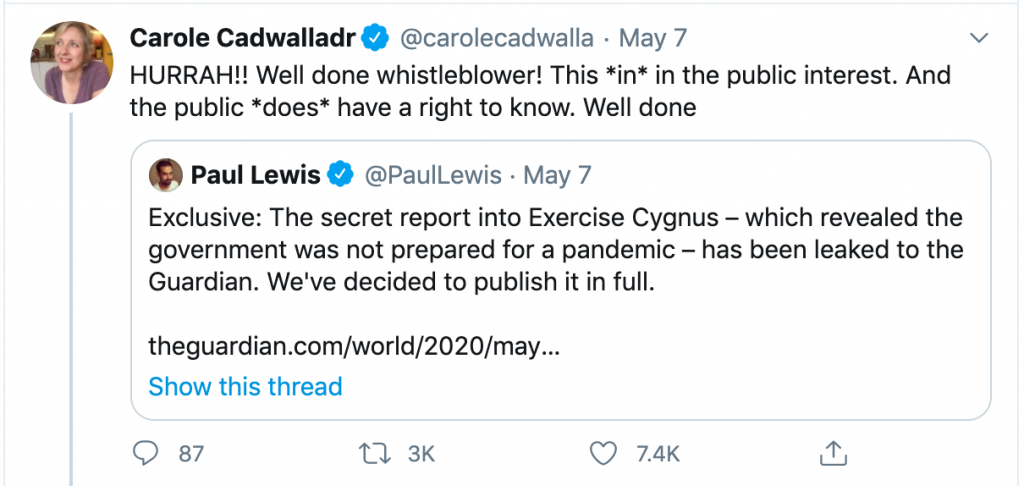In this workshop participants will learn the basics of the social network Twitter in order to be exposed to and share information in the form of a tweet.
General Objective
Preparation time for facilitator
Competence area
Time needed to complete activity (for learner)
Name of author
Support material needed for training
Resource originally created in
Introduction
To tweet is to produce and share information. Some people use Twitter to document moments of their lives, others just to follow subjects and personalities that interest them. During this workshop, participants will learn how to tweet. The objective is to develop awareness that social media is a good way to forward information and often in a way that gets at the core of that information by sharing it in a clear and concise way. Adolescents today will be more used to doing this by image using platforms like TikTok, Instagram and Snapchat.
Workshop preparation: Create a Twitter account in advance. Participants will all use this one account during the workshop. Give the account a name and a password that everyone will know. During the creation process, Twitter suggests you follow a dozen accounts and that you choose these based on their connection with subjects and themes you are interested in. We recommend you follow between 20 and 30 to broaden the scope. If you don’t have a projector, print the examples from step 2. Each participant needs to have a copy.
Facilitation tips: For more information on Twitter, we recommend you refer the workshop plan ‘Tool – Twitter‘.
Discussion
To begin, have a quick discussion with participants by posing a few questions. For example:
- Who uses Twitter and for what reasons?
- Who uses it to stay informed and to pass on information?
As an introductory exercise, give them this short exercise:
“You learn that your town’s cinema is about to close due to lack of customers. The cinema had four screens. It had been undergoing financial difficulty for the past five years. More and more people are now streaming films at home. ‘We did introduce a €5 child ticket and a €6 student ticket’, the manager Mr. Pridebrow told the BBC.’
In this scenario, participants need to share the information on their Twitter account. Ask them to each write a tweet on a piece of paper. Remind them that there is a character limit of 280. They should stick within the limits, which equate to around 2-3 lines. Consider what they came up with. Each group member should read their tweet. Did they include hashtags and @ symbols in front of certain names and terms?
Learning what can be done on Twitter
If you feel it to be necessary, feel free to return to basic definitions regarding the use of Twitter. For this, divide the group into two teams and ask them the questions below one after the other. The first team to answer correctly (or to come closest to being correct) gets a point. Each group is allowed to answer once per question. If they get it wrong, the other team can try before the first team can try again.
What is a hashtag (#) ? Answer: it’s a keyword that can tag by placing the hash just before. The user can search by keyword by inputting @keyword in the search bar.
What is the @ used for? Answer: tagging accounts in a tweet (which creates a hyperlink leading to its subject), or for looking for a particular account in the search bar.
What is the character limit of a tweet? Answer: 280 characters
What does retweeting mean? Answer: sharing another user’s tweet on your own account, for your own followers.
To whom can you send private messages? Answer: to an account you follow and that follows you back. A user may also choose to receive private messages from any user, but this option is deactivated by default due to the risk of spam.
Can you see every profile on Twitter? Answer: No, accounts are set to private. Only accounts that follow them can see their profiles, tweets, etc.
What is term for used for subscribing an account? To follow/following When I see a tweet, what can I do? Answer:
- comment
- like
- retweet
- send it to a friend via private message
- flag it (if it’s insulting, contains hate speech, etc.)
What does ‘trending’ mean? Answer: currently popular or widely discussed online, especially on social media websites.
What is the ‘You might like’ section about? Account suggestions are based on many factors, including your address book contacts (if you have chosen to upload them) as well as patterns from your following history. These suggestions are generated by algorithms, which means you may or may not know the accounts or find them relevant.
What can be included in a tweet, other than text? Answer:
- An image
- A GIF
- Question/survey
- A location
- A link
To introduce the second part of the activity, give out the password to the Twitter account you created in advance and let them explore the social network so they can get used to the different sections, options and what they can do. Now they are aware of the basics, it’s time to learn to tweet. For this, you will propose several cases about which participants will need to tweet. Here are the rules to follow:
- Include hashtags and tag accounts (but not too many as the tweet can become illegible, becoming a ‘Christmas tree’)
- Include an image or GIF where appropriate
- Add a link where relevant
- Know what part(s) of the information to highlight (they will quickly learn that it is sometimes necessary to restate and paraphrase information to be able to include it within the character limit)
- A long tweet is not necessarily a good tweet. Try to be both concise and precise.
After each case, feel free to ask them to read their tweets aloud. You can then discuss them together.
Case 1
The US unemployment rate has risen to 14.7%, with 20.5 million jobs lost in April, as the coronavirus pandemic devastated the economy.
The rise means the jobless rate is now worse than at any time since the Great Depression of the 1930s. Since the pandemic began, the US has suffered its worst growth numbers in a decade and the worst retail sales report on record. Just two months ago, the unemployment rate was at 3.5%, a 50-year low. “It is historically unprecedented,” said economist Erica Groshen, former head of the government’s Bureau of Labor Statistics, who now teaches at Cornell University. “We have put our economy into a medically induced coma in order to heal it from the pandemic… and that has led to the most precipitous loss of jobs seen in any of the modern data.” Source
Case 2
The [US] presidential candidate Michael Bloomberg has insisted he is a “champion for women in the workplace”, after the republication of a 30-year-old booklet purporting to contain his “Wit and Wisdom” cast an uncomfortable spotlight on the billionaire former New York mayor.
The Washington Post made the 1990 booklet available online as it published an investigation of how Bloomberg has “for years battled women’s allegations of profane, sexist comments”. The booklet was presented as a gift to Bloomberg on his 48th birthday party and contains a catalogue of sexist remarks attributed to the billionaire during his time at the company he founded.
Case 3
Read this article and tweet something about it (you can choose something else of course) BBC News: Study finds ‘huge’ fall in FGM rates among African girls
Case 4
Ask them to tweet about the following (you can choose your own example instead if you wish): Canadian singer-songwriter Béatrice Martin, known by her stage name Coeur de Pirate (Pirate Heart), participated in The Womanhood Project, which showcases intimate portraits of women ‘in their own environment depicting who they really are in the most personal and natural way possible.’ She had this to say on the experience: ‘Very happy to be part of @the_womanhood_project / I do love Instagram but there is a real problem with inclusiveness on this platform. I find it important to give visibility to accounts and projects that promote diversity and use feminism in a way that destroys the patriarchal way of portraying women. It’s not easy to post this : it’s not retouched in any way but I have to be proud of my body and what I put it through. Anyway, y’all love yourselves now.’ Source in French article
Facilitation tip: We recommend you print each case so that each participant can have their own example in from of them. If you have projector, it might be easier to display them for the group.
Retweeting
For the final part of the workshop, ask participants to click on ‘Home’ at the top left of their account screen, see what people are tweeting about and choose three examples to retweet. The best way to do it would be to write their own message which will appear above the retweeted tweet. The goal of this is to reinforce or denigrate the tweet or show it in a new light, adding for example humour, irony or sarcasm. Here are two examples:

